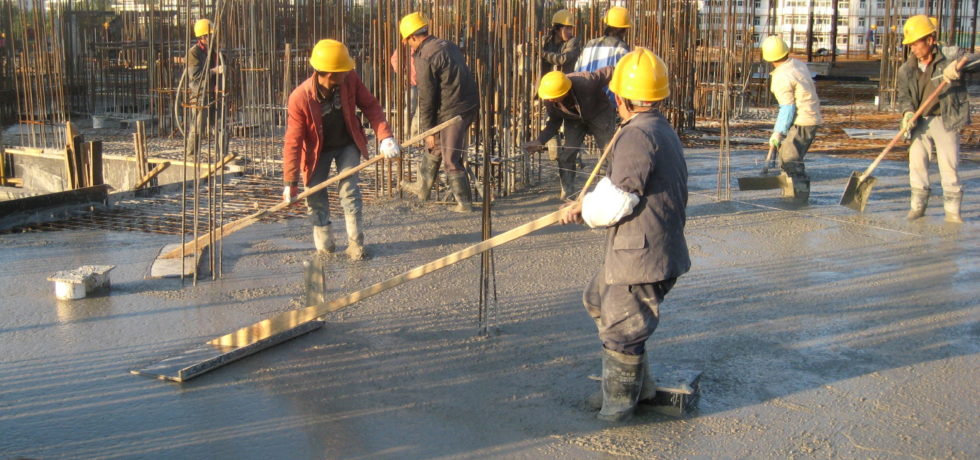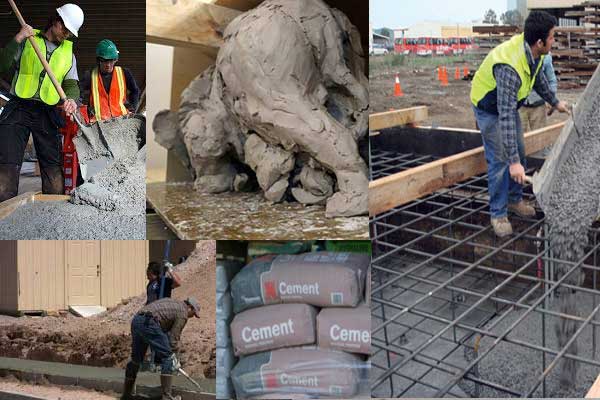The Necessary Role of Concrete Structure in Structural Honesty and Longevity
When it involves building a building, the structure is much more crucial than you may believe. Concrete structures supply unmatched stamina and durability, ensuring your structure can hold up against different environmental obstacles. Without a solid base, you risk potential issues like shifting or cracking, which can endanger security and value. Understanding the subtleties of concrete foundations might be the key to protecting your financial investment for several years ahead. What should you take into consideration next?
Comprehending the Value of Concrete Foundations
Concrete structures are important to the total stability of any kind of framework, as they supply the important assistance needed to endure various tons and environmental problems. When you consider constructing a home or an industrial space, the structure is the initial point you need to consider. It serves as an obstacle versus dampness, safeguarding your residential or commercial property from water damages. A well-placed concrete foundation additionally prevents settling and changing, which can lead to fractures in walls and floorings. You'll wish to assure that the structure is properly developed and enhanced, as this affects the long life of your building. Additionally, a solid foundation can enhance energy performance by reducing air leaks. Remember, overlooking the relevance of a concrete structure can lead to costly repairs down the line. Investing in a top quality foundation upfront is essential for the stability and resilience of your structure.
Advantages of Concrete Structures for Architectural Integrity
While several aspects add to a structure's structural honesty, concrete foundations supply unmatched sturdiness and stamina. You'll appreciate that concrete can withstand severe weather, standing up to both moisture and temperature level fluctuations. This durability means your structure is much less most likely to experience splitting or moving over time, which can jeopardize its safety.Additionally, concrete's integral weight supplies a solid base, avoiding motion during natural occasions like earthquakes or floods. When you pick a concrete foundation, you're additionally choosing for reduced maintenance; unlike wood, it will not rot or attract insects, conserving you time and money in repairs.Moreover, concrete's fire resistance uses added security, ensuring your framework can withstand high temperature levels without significant damage. In general, purchasing a concrete structure indicates you're focusing on the lasting stability and integrity of your structure, making it a wise option for any type of building task.
Typical Kinds Of Concrete Foundations
When it concerns developing structures, understanding the usual kinds of concrete structures can aid you make notified choices for your job. The most common kinds include slab-on-grade, crawl room, and complete basement foundations.A slab-on-grade foundation is a basic, economical choice, where a thick concrete slab is put straight on the ground. This kind functions well in warm environments, as it minimizes warm loss.Crawl area structures raise the home slightly above ground, permitting for ventilation and access to plumbing and electric systems. This layout can assist stop moisture issues.Full cellar foundations offer additional living or storage space while giving excellent structural support. They require more excavation and are commonly used in colder climates to stop frost heave.
Factors to Take Into Consideration When Designing a Concrete Foundation

Ideal Practices for Installing Concrete Foundations
When you're installing a concrete structure, appropriate website prep work is vital to ensure stability (West Coast General Engineering industrial concrete Rancho Cucamonga). You'll also require to comprehend support strategies to boost toughness and sturdiness. Don't forget the curing procedure, as it plays a fundamental function in accomplishing a solid structure.
Site Preparation Importance
It may seem uncomplicated, appropriate website preparation is vital for assuring a strong and durable concrete structure. Start by clearing the area of any particles, vegetation, or natural product that can endanger the structure's stability. Next, assess the soil kind and compaction; you might require to dig deep into or add materials to create a steady base. Level the ground to guarantee also weight circulation and stay clear of resolving problems in the future. Mounting proper water drainage systems is also vital to avoid water buildup, which can weaken the structure over time. Lastly, mark out the structure's dimensions accurately to lead the putting procedure. By complying with these steps, you'll establish the stage for a successful concrete structure that stands the test of time.
Support Methods Discussed
As soon as the site is effectively prepared, the next action in assuring a tough concrete structure includes executing effective support methods. You must start by making use of steel rebar, which supplies tensile strength and aids stop fracturing. Lay the rebar in a grid pattern, seeing to it it rises using spacers to preserve proper insurance coverage. Additionally, consider utilizing wire mesh for additional assistance, particularly in locations based on hefty loads. Don't neglect to connect the rebar intersections firmly with wire. For larger foundations, fiber reinforcement can boost sturdiness, lowering the danger of shrinking fractures. Always follow regional building ordinance and guidelines to ensure compliance. By using these reinforcement strategies, you'll greatly enhance your foundation's strength and longevity, laying a strong foundation for your structure.
Healing Refine Basics
To assure your concrete structure cures properly, it is very important to preserve appropriate wetness and temperature level conditions promptly after pouring. Beginning by covering the surface area with a damp burlap or plastic sheet to retain moisture. This keeps the concrete moisturized, stopping splits and guaranteeing toughness. You should likewise keep track of the temperature level; perfect healing problems are in between 50 ° F and 90 ° F. If it's as well hot, haze the surface area frequently to stop fast dissipation. For cool weather condition, take into consideration making use of shielding coverings to keep heat. Objective for a treating period of a minimum of seven days, as this is crucial for optimal stamina advancement. By complying with these ideal methods, you'll improve your structure's durability and durability, ensuring architectural stability for years to find.
Maintenance of Concrete Foundations for Long Life
To keep have a peek at these guys your concrete foundation strong and long-term, normal assessments are necessary. You must additionally ensure effective drainage solutions are in place to stop water damage. If you detect any type of fractures, resolving them without delay will conserve you from larger troubles down the line.

Regular Evaluations and Analyses
While normal examinations and analyses might appear like a chore, they're necessary for maintaining the stability of your concrete foundation. By consistently checking for cracks, shifts, or indicators of wear, you can catch potential problems before they additional info escalate into costly repair work. Seek any type of water pooling around the structure or unusual settling, as these can signify underlying problems. It's also a good idea to keep an eye on any adjustments in your house's framework, like doors that stick or home windows that do not open efficiently. Keeping a document of your inspections helps track adjustments with time, permitting aggressive upkeep. Inevitably, these evaluations assure your foundation stays steady, supporting the durability and security of your whole structure. Do not overlook this vital element of homeownership!
Effective Drainage Solutions
Routine examinations can disclose problems like drain troubles that might compromise your concrete structure's security. To stop water accumulation, assure your gutters and downspouts straight water away from the foundation. Installing French drains can properly reroute surface area and groundwater, decreasing pressure on your foundation walls. In addition, grading the soil around your home aids guarantee that water moves away, instead of pooling near your foundation.Consider using sump pumps in locations prone to flooding, as they actively get rid of excess water. Regularly look for obstructions in drainage systems and clear them immediately. You'll safeguard your foundation's honesty and long life by taking these proactive actions. Remember, effective water drainage options are essential for keeping a solid, long lasting concrete structure.
Trigger Split Repairs
When you see splits in your concrete structure, addressing them promptly is necessary for keeping its durability. Small cracks can promptly advance into larger concerns, jeopardizing the architectural stability of your home. Routinely check your foundation for indications of damage, such as horizontal or upright cracks. If you identify any type of, do not wait-- fix them instantly. You can utilize epoxy shots or concrete patching substances, which are reliable for sealing splits. Always follow the supplier's instructions and take into consideration speaking with a specialist for substantial damage. Bear in mind, prompt fixings not only boost your structure's toughness however likewise save you money over time by preventing much more comprehensive repair work down the line. Stay proactive, and your foundation will certainly continue to be solid and safe.
Dealing With Common Problems With Concrete Foundations
Concrete structures can deal with numerous problems over time, making it important to recognize and resolve them promptly. Among one of the most common troubles is cracking, which can take place because of temperature level variations or settling soil. If you discover splits, it's important to evaluate their dimension and deepness; little cracks can commonly be secured, while larger ones might call for specialist evaluation.Water breach is another significant concern. Excess wetness can result in mold development my sources and structural degeneration. Assurance appropriate water drainage around your foundation to reduce this danger. In addition, look for indicators of shifting or bowing walls, as this can show underlying concerns with your foundation's stability.Regular assessments are fundamental to catch these troubles early. If you find any type of worrying signs, do not think twice to seek advice from a foundation professional. By remaining positive, you can keep the integrity and durability of your concrete structure, assuring your home continues to be safe and safe and secure.
Frequently Asked Inquiries
How Does Soil Type Impact Concrete Foundation Performance?
Dirt type significantly impacts concrete structure performance. If you have actually got extensive clay, for instance, it can cause changing and fracturing. Sandy dirt might cause working out. Comprehending your dirt aids assure a secure structure.
Can Concrete Foundations Be Repaired if Harmed?
Yes, you can repair broken concrete structures. Depending on the degree of the damage, strategies like epoxy injection or piece jacking can recover stability. It's finest to seek advice from a professional for reliable services.
What Is the Typical Life Expectancy of a Concrete Foundation?
A concrete foundation typically lasts 30 to 100 years, depending on factors like dirt conditions, environment, and upkeep. You'll wish to maintain an eye on it to guarantee it continues to be in good shape throughout its life-span.
Are There Alternative Materials to Concrete for Foundations?
Yes, there are choices to concrete for structures, like steel, wood, and even recycled products. Each option has distinct advantages and downsides, so you ought to consider your project's particular needs when choosing the best material.
Just How Does Climate Impact Concrete Foundation Longevity?
Environment substantially affects concrete foundation durability (West Coast GE Concrete contractors). Extreme temperature levels, wetness, and freeze-thaw cycles can damage the material, leading to fractures and structural issues. You ought to consider regional climate conditions when planning your structure to ensure lasting efficiency